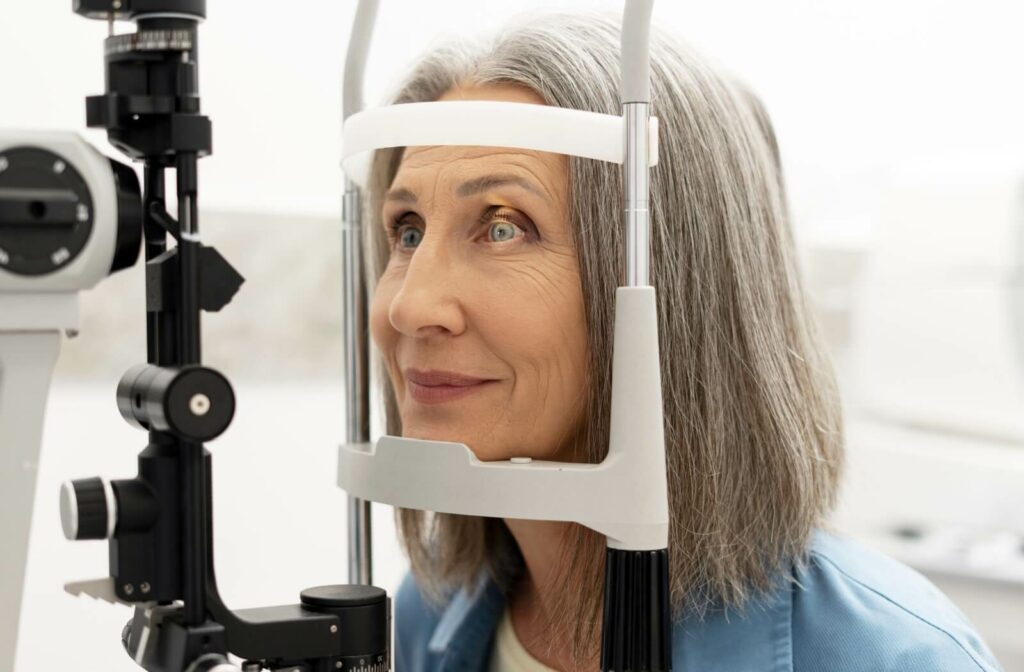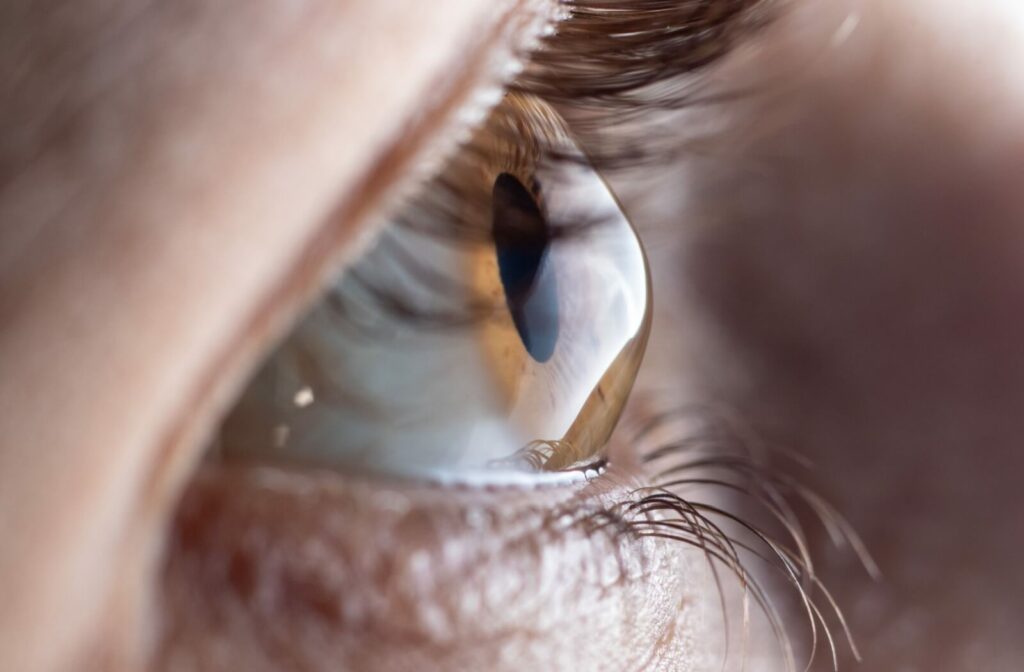Keratoconus is a progressive eye condition where the cornea, the clear, dome-shaped front surface of the eye, thins and bulges into a cone-like shape. This irregular shape distorts how light enters the eye, often leading to blurry and distorted vision, and making tasks like driving, reading, or using a computer more challenging.
While keratoconus cannot be completely cured, it can be managed effectively with modern treatments that help slow progression and restore clearer vision.
What Are the Symptoms of Keratoconus?
The signs of keratoconus can vary depending on how advanced the condition is. In its early stages, symptoms may be subtle and easily mistaken for other vision issues. However, as the condition progresses, the symptoms become more noticeable. Common signs include:
- Blurred or distorted vision
- Increased light sensitivity
- Frequent prescription changes
- Double vision
If you notice any of these symptoms, it’s important to schedule an eye exam. Early detection allows for earlier intervention, which can make a significant difference in preserving your vision.
What Causes Keratoconus?
The exact cause of keratoconus isn’t fully understood, but research suggests it’s influenced by a combination of genetic, environmental, and biochemical factors. Risk factors can include:
- Family history: Having relatives with keratoconus increases your risk of developing the condition.
- Excessive eye rubbing: Rubbing the eyes frequently or vigorously can weaken the corneal structure.
- Underlying medical conditions: Disorders like Down syndrome, connective tissue disorders, or chronic allergies may contribute.
- Oxidative stress: Cellular damage from free radicals in the corneal tissue may play a role.
Understanding these risk factors highlights why both genetics and lifestyle habits matter in protecting your eye health.
Can Keratoconus Be Cured?
The short answer is no, keratoconus cannot be cured completely. Once the cornea begins thinning and reshaping, the structural changes are permanent. However, thanks to advancements in modern eye care, there are highly effective ways to slow or stop its progression and restore clearer, more comfortable vision.
Treatment Options for Keratoconus
The right treatment depends on the stage of keratoconus and how much it impacts daily life. Here are some of the most common approaches:
Eyeglasses & Soft Contact Lenses
In the early stages, standard eyeglasses or soft contact lenses may correct vision by compensating for mild nearsightedness or astigmatism. However, as the cornea becomes more irregular, these options often become less effective.
Hybrid Lenses
Hybrid lenses, such as SynergEyes, combine 2 materials in one lens: a rigid center and a soft outer ring. The rigid middle corrects vision on the central cornea, while the soft outer ring improves lens centration and comfort. This makes them a great option for patients who need the visual clarity of a rigid lens but want improved initial comfort compared to a corneal RGP (rigid gas permeable) lens.
Scleral Contact Lenses
Scleral lenses are specialty contact lenses designed for conditions like keratoconus. Instead of sitting directly on the cornea, scleral lenses rest on the sclera (the white part of the eye) and vault over the cornea, creating a tear-filled reservoir beneath.
Benefits of scleral lenses include:
- Clearer, more stable vision
- Improved comfort, since they don’t touch the sensitive corneal tissue
- Constant hydration of the eye helps reduce dryness
Corneal Cross-Linking (CXL)
One of the most significant breakthroughs in keratoconus management is corneal cross-linking. This outpatient procedure strengthens the corneal tissue using a special riboflavin (vitamin B2) solution activated by UV light.
Why it matters: Cross-linking doesn’t reverse keratoconus, but it can slow or stop its progression, thereby preventing the need for more invasive surgery later on.
Intacs
Intacs are small, implantable devices placed within the cornea to gently flatten and reshape its surface. By creating a more natural, rounded corneal shape, they can improve vision and reduce the irregular effects of keratoconus, often delaying or preventing the need for more invasive procedures, such as a corneal transplant.
Corneal Transplant Surgery
In advanced cases where vision cannot be corrected with lenses or Intacs, a corneal transplant may be necessary. During this surgery, the damaged cornea is replaced with healthy donor tissue. While often successful in restoring vision, it’s considered a last-resort treatment after other options have been exhausted.

Protecting Your Vision with Keratoconus
Managing keratoconus requires proactive care. Here are a few ways you can protect your eyesight:
- Schedule regular eye exams: Ongoing monitoring ensures early detection of changes in your cornea.
- Avoid rubbing your eyes: This can worsen corneal thinning. Use lubricating or allergy drops to relieve irritation and itching instead.
- Follow your treatment plan: Whether it’s scleral lenses or cross-linking, consistency matters.
- Protect your eyes from UV light: Sunglasses can reduce stress on your eyes and minimize discomfort.
The Benefits of Early Intervention
Early diagnosis makes a world of difference for patients with keratoconus. Modern treatments are most effective when the condition is caught before it becomes severe. With tools like cross-linking and scleral lenses, many people can maintain clear vision and avoid invasive surgeries.
Experienced Keratoconus Care in Denver
While keratoconus cannot be cured, it can be effectively managed with today’s treatments, allowing patients to maintain clear and comfortable vision. At Cherry Creek Eye Physicians & Surgeons in Denver, CO, our experienced team offers modern diagnostics and treatment options tailored to your needs, from specialty scleral lenses to advanced surgical care.
If you’ve noticed changes in your vision or have been diagnosed with keratoconus, don’t wait to act. Schedule an appointment with us today and take the first step toward protecting your vision and preserving your quality of life.


